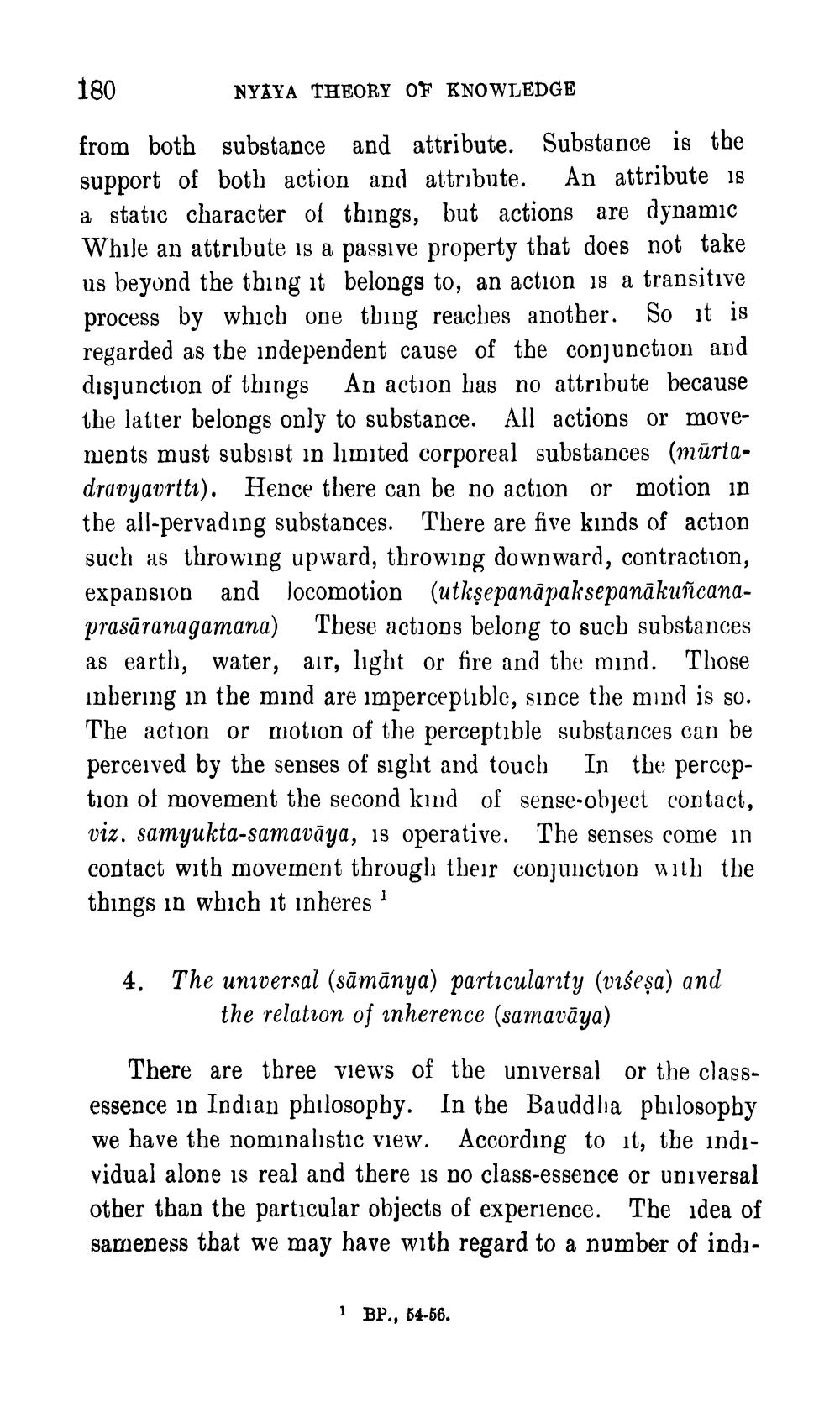________________
180
NYAYA THEORY OF KNOWLEDGE
from both substance and attribute. Substance is the support of both action and attribute. An attribute is à static character of things, but actions are dynamic While an attribute is a passive property that does not take us beyond the thing it belongs to, an action is a transitive process by which one tbing reaches another. So it is regarded as the independent cause of the conjunction and disjunction of things An action has no attribute because the latter belongs only to substance. All actions or movements must subsist in limited corporeal substances (mūrtadravyavrttı). Hence there can be no action or motion in the all-pervadıng substances. There are five kinds of action such as throwing upward, throwing downward, contraction, expansion and locomotion (utkşepanāpaksepanākuīcanaprasāranagamana) These actions belong to such substances as earth, water, air, light or fire and the mind. Those inhering in the mind are imperceptible, since the mind is so. The action or motion of the perceptible substances can be perceived by the senses of sight and touch In the perception of movement the second kind of sense-object contact, viz. samyukta-samavāya, is operative. The senses come in contact with movement through their conjunction with the things in which it inheres
4.
The universal (sāmānya) particularity (visesa) and
the relation of inherence (samavāya)
There are three views of the universal or the classessence in Indian philosophy. In the Bauddha philosophy we have the nominalistic view. According to it, the indıvidual alone is real and there is no class-essence or universal other than the particular objects of experience. The idea of sameness that we may have with regard to a number of indı
1 BP., 54-56.




